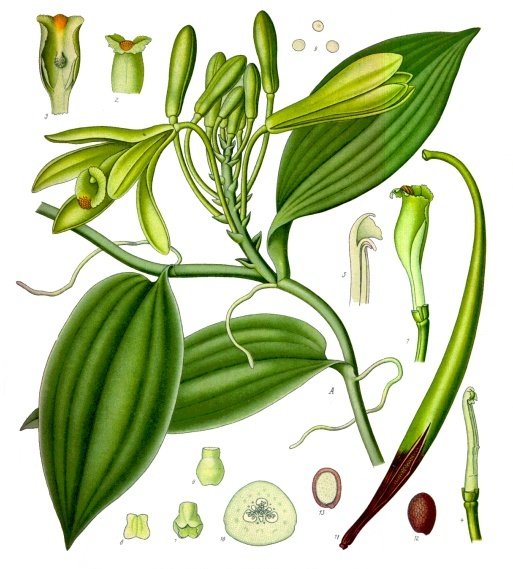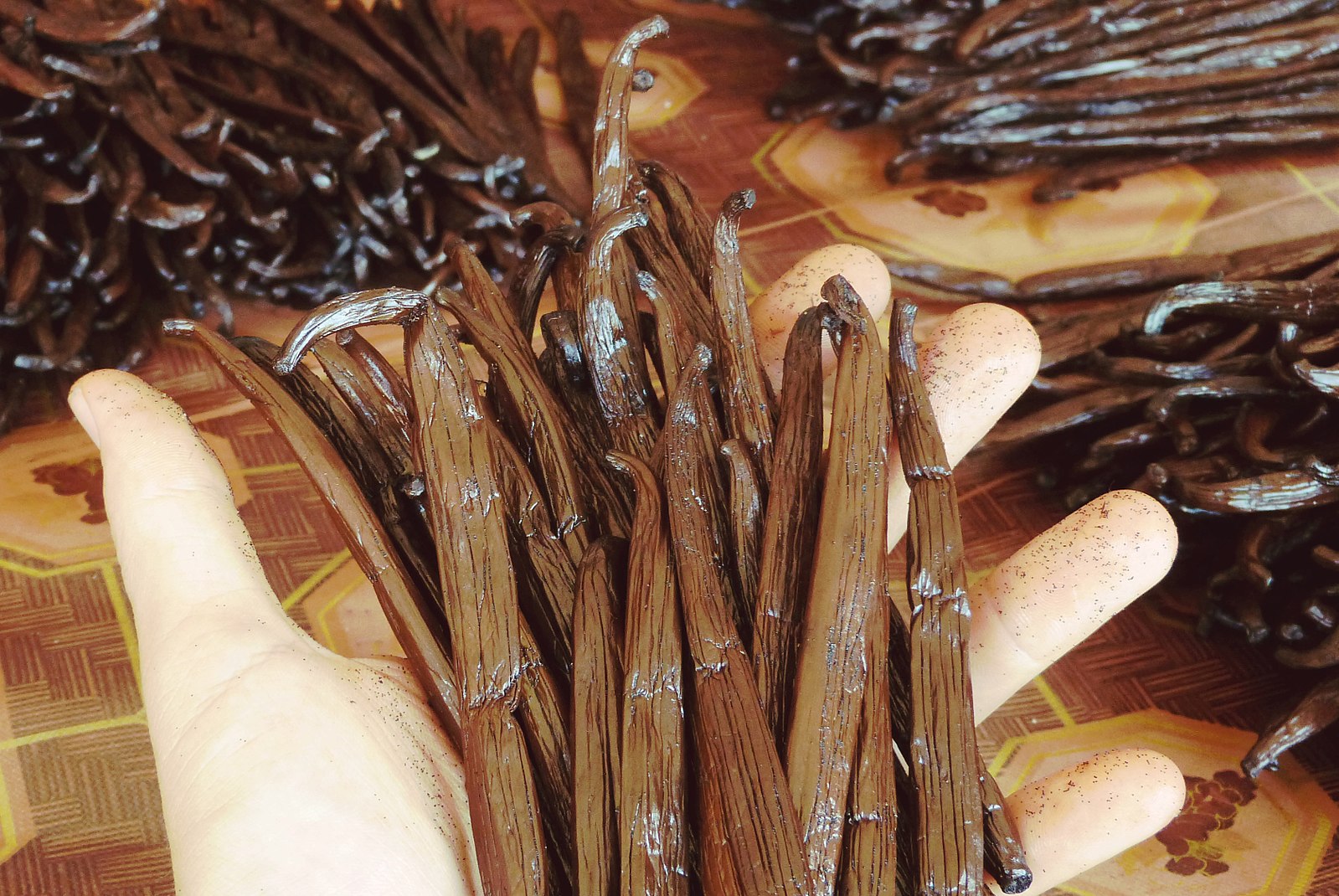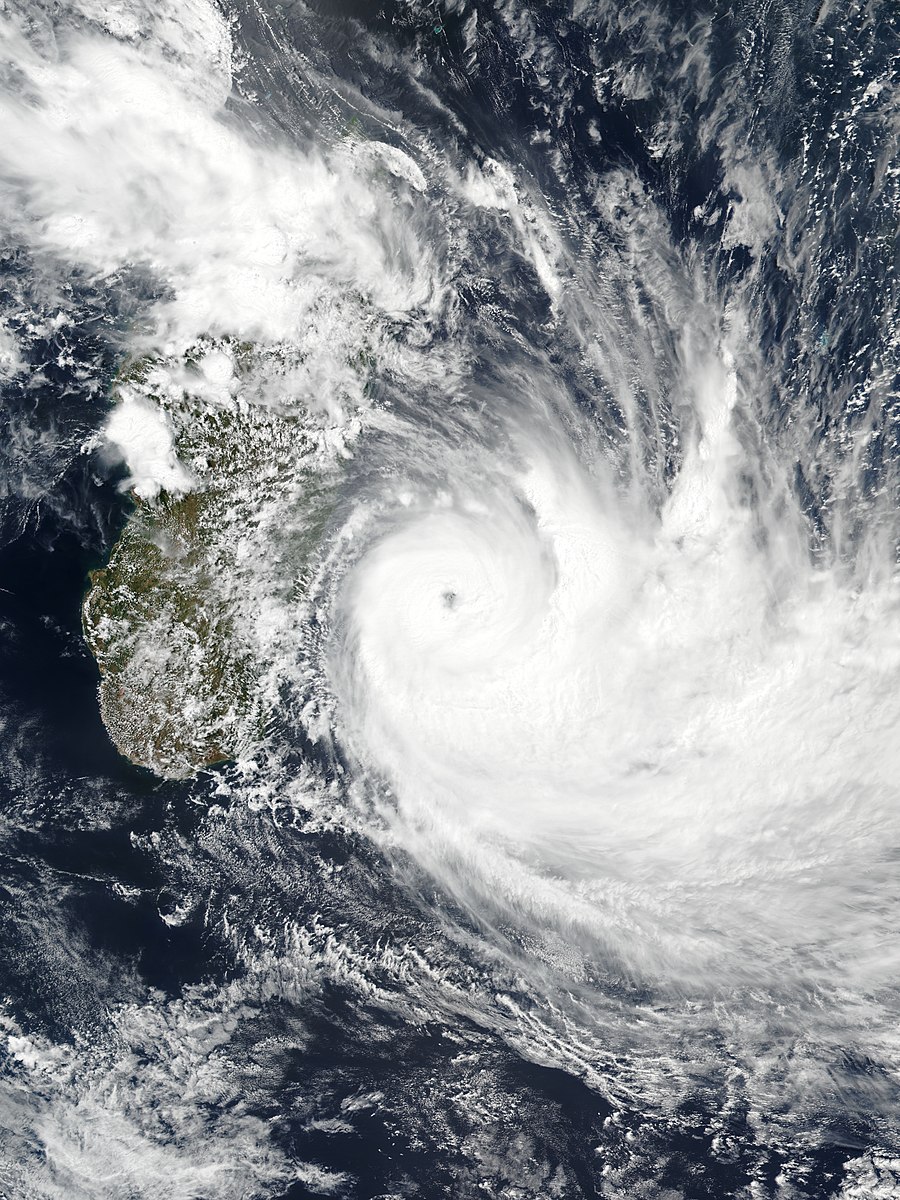Vanilla
Vanilla Ice Cream (credit: Wikicommons)
It isn't often vanilla and silver are used in the same sentence unless to describe an 18th Century confection served in a silver cup. That changed dramatically when a kilogram (2.2lbs) of vanilla sold for over $600/kg and silver bullion was selling at $530/kg in 2017. Such sky-high prices for raw vanilla is felt by bakers, ice cream makers, and consumers alike as vanilla is popular around the world and ranked as the #1 flavor in the USA.
In 1520, Cortez and his conquistadores found the people of Mexico and Central America enjoying vanilla in their food and drinks when they reached the Aztec capitol. Meso-Americans were growing the Vanilla orchid (Vanilla planifolia) from which the flavoring was extracted from the seed pods. The Spanish returned to Europe with the plants where they were grown in France and elsewhere in glasshouses. To produce seed pods, the orchid requires a specific bee for pollination that existed only in Central America. Pod production remained a mystery until a hand-pollination method was developed. The French then carried plants to their Indian Ocean island colonies of Reunion, the Seychelles, and Madagascar along with the instructions for pollinating them. While vanilla was soon cultivated in other tropical countries, by the end of the 19th Century the three French islands became the source for 80% of world's vanilla production. Fast forward to today and Madagascar alone produced nearly 85 per cent of the world’s vanilla.


Vanilla orchid vines and seed pods (credit: Wikicommons)
What has caused the huge leap in vanilla prices? The answer shows a direct connection between environmental events, climate change, and an economic commodity, a popular flavoring.
In two months, Madagascar was struck by dual cyclones including the massive Cyclone Dumazile that destroyed the nation's vanilla farms. NASA tracked the cyclone that grew to typhoon strength as it approached the island. Within 24 hours, Dumazile reached super-storm intensity with sustained winds of 120mph and gusts up to 150mph in the meteorological process of bombogenisis. At some locations, Dumazile dumped rain at a rate of 6 inches/hour with heavier precipitation measured by Earth monitoring satellites of rainfall exceeding 8 inches/hour. Models of climate change impacts all predict as atmosphere warming from CO2 continues, the number and intensity of storms will also increase. Warmer air can pull and hold more moisture as a storm crosses an ocean.

Eye of Cyclone Dumazile, 3-5-2018 (credit: NASA)
A cyclone of Damazile's magnitude, hitting an island with limited protective services or infrastructure, creates great destruction. In what became a double hit, Madagascar was struck by Cyclone Eliakim two weeks later that slammed same areas as Dumazile. The back-to-back super-storms destroyed the small-holder farms and plantations across Madagascar's vanilla growing regions and world vanilla prices skyrocketed.
Next time you enjoy an ice cream cone, consider connecting a few dots between the environment, climate change, and the heavy impact that can even affect a sweet treat.
WHB
WHB